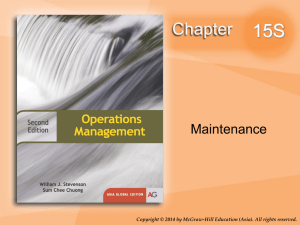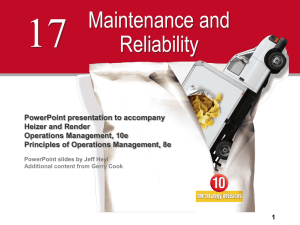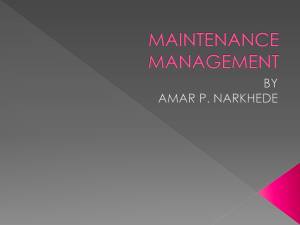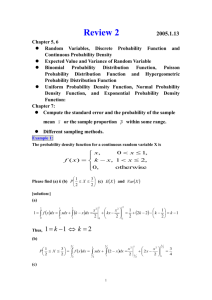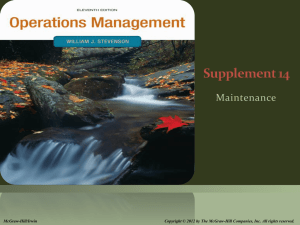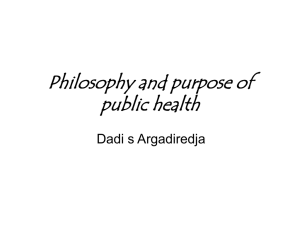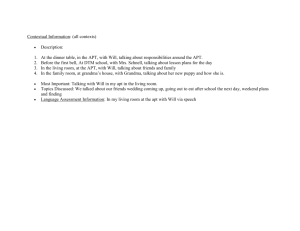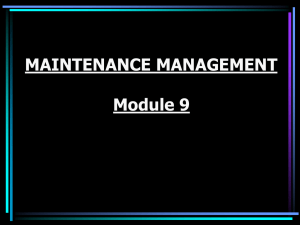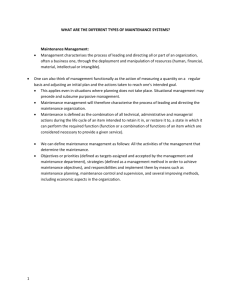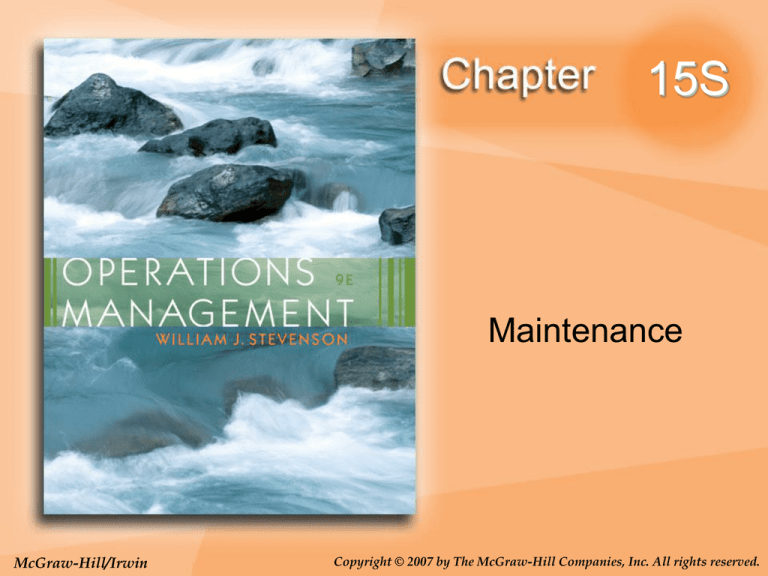
15S
Maintenance
McGraw-Hill/Irwin
Copyright © 2007 by The McGraw-Hill Companies, Inc. All rights reserved.
Learning Objectives
Explain the importance of maintenance in
production systems
Describe the range of maintenance activities
Discuss preventative maintenance and the
key issues associated with it
Discuss breakdown maintenance and the
key issues associated with it
State how the Pareto phenomenon pertains
to maintenance decisions
15S-2
Introduction
Maintenance
All activities that maintain facilities and
equipment in good working order so
that a system can perform as intended
Two basic categories
Building and grounds
Equipment maintenance
15S-3
Goal of Maintenance
To keep production systems in good working
order at minimal cost
Reasons for maintenance
To avoid production or service disruptions
To not add production or service costs
To maintain high quality
To avoid missed delivery dates
15S-4
Reactive vs Proactive
Reactive Maintenance:
Breakdown maintenance
Reactive approach; dealing with breakdowns or
problems when they occur
Proactive Maintenance:
Preventive maintenance
Proactive approach; reducing breakdowns
through a program of lubrication, adjustment,
cleaning, inspection, and replacement of worn
parts
15S-5
Maintenance Reasons
Reasons for keeping equipment running
Avoid production disruptions
Not add to production costs
Maintain high quality
Avoid missed delivery dates
15S-6
Breakdown Consequences
Production capacity is reduced
Orders are delayed
No production
Overhead continues
Cost per unit increases
Quality issues
Product may be damaged
Safety issues
Injury to employees
Injury to customers
15S-7
Total Maintenance Cost
Table 15S.1
Cost
Total Cost
Preventive
maintenance cost
Breakdown and
repair cost
Optimum Amount of
preventive maintenance
15S-8
Preventive Maintenance
Preventive maintenance: goal is to
reduce the incidence of breakdowns or
failures in the plant or equipment to
avoid the associated costs
Preventive maintenance is periodic
Result of planned inspections
According to calendar
After predetermined number of hours
15S-9
Example S-1
Frequency of breakdown
Number of breakdowns
Frequency of occurrence
0
1
2
3
.20 .30 .40 .10
If the average cost of a breakdown is
$1,000, and the cost of preventative
maintenance is $1,250 per month, should
we use preventive maintenance?
15S-10
Example S-1 Solution
Number of
Breakdowns
0
1
2
3
Frequency of
Occurrence
.20
.30
.40
.10
1.00
Expected number of
Breakdowns
0
.30
.80
.30
1.40
Expected cost to repair = 1.4 breakdowns per month X $1000 = $1400
Preventive maintenance = $1250
PM results in savings of $150 per month
15S-11
Predictive Maintenance
Predictive maintenance
An attempt to determine when best to
perform preventive maintenance activities
Total productive maintenance
JIT approach where workers perform
preventive maintenance on the machines
they operate
15S-12
Breakdown Programs
Standby or backup equipment that can
be quickly pressed into service
Inventories of spare parts that can be
installed as needed
Operators who are able to perform minor
repairs
Repair people who are well trained and
readily available to diagnose and correct
problems with equipment
15S-13
Replacement
Trade-off decisions
Cost of replacement vs cost of continued
maintenance
New equipment with new features vs
maintenance
Installation of new equipment may cause
disruptions
Training costs of employees on new equipment
Forecasts for demand on equipment may
require new equipment capacity
When is it time for replacement?
15S-14

